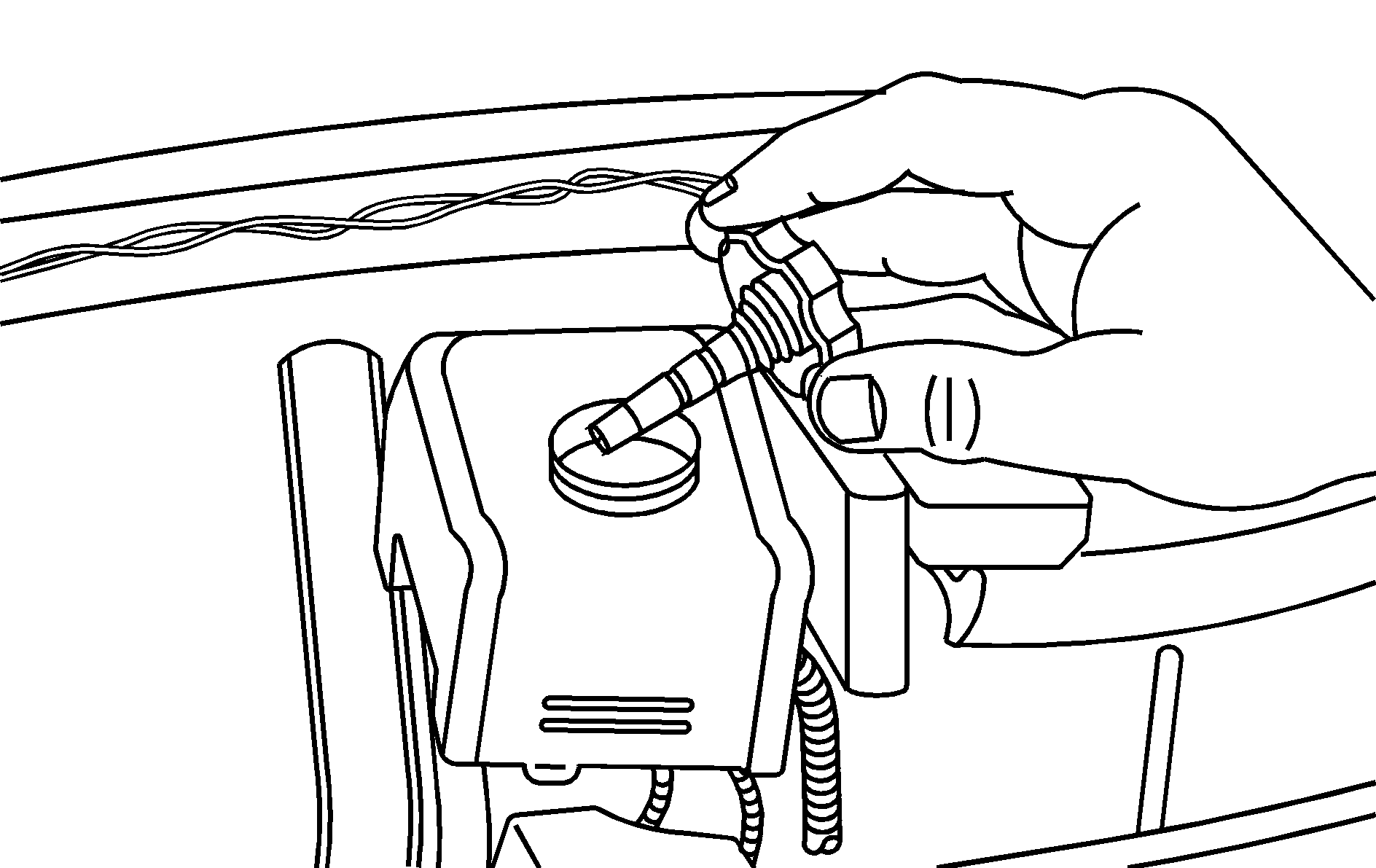When to Check Power Steering Fluid

It is not necessary to regularly check power steering fluid unless you suspect there is a leak in the system or you hear an unusual noise. A fluid loss in the system could indicate a problem. Have the system inspected and repaired. Refer to Engine Compartment Overview for reservoir location.
How to Check Power Steering Fluid
- Turn Key off.
- When the engine compartment is cool, wipe the cap and the top of the reservoir clean.
- Unscrew the cap and wipe the dipstick with a clean rag.
- Replace the cap and tighten completely.
- Now remove the cap again and look at the fluid level on the dipstick.
- If the fluid level is below the "ADD" mark, add only enough fluid to bring the level up to the "ADD" mark. The level should be at or above the "ADD" mark when the engine compartment is cool.
It is normal for the power steering fluid level to change as the fluid warms or cools. When the engine compartment is hot, the level should be at or slightly above the "FULL" mark -- this doesn't mean the reservoir is overfilled. If the fluid level is below the "FULL" mark, add only enough fluid to bring the level up to the "FULL" mark.
What to Use
If the fluid level is below the "ADD" mark (cold engine) or "FULL" mark (hot engine), add power steering fluid that meets GM specification 9985010. GM Part No. 1052884 (16 oz or .47 L), GM Part No. 1050017 (32 oz. or .946 L), and Saturn Part No. 21007583 (16 oz. or .47 L) all meet this specification.
Always use the proper fluid. Failure to use the proper fluid can cause leaks and damage hoses and seals. The repairs would not be covered by your vehicle warranty. Add fluid in small amounts, continually checking the lever, until you reach the "ADD" make (cold engine) or "FULL" mark (hot engine). Do not overfill.
When you are finished, replace the reservoir cap and tighten it completely. Be sure to wipe any excess power steering fluid from the top and sides of the reservoir.
